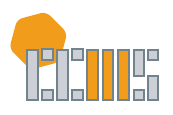Abstract / Synopsis
Despite convincing arguments by mathematicians, philosophers, sociologists and machine learning practitioners to the contrary, there remains a widespread notion amongst many members of the general public (and some practitioners) that mathematics is neutral, that it is free from human values. One reason why this notion persists is that we lack clear-cut examples that demonstrate how mathematics and values are intertwined. In this paper, we offer one such example. In particular, we show that when sharing four biscuits between three people, several possible mathematical and ethical frameworks can be used. We demonstrate that different solutions—hiding one biscuit, arbitrarily sharing the extra biscuit, randomizing allocation, dividing the extra biscuit into three parts, and successively dividing it into smaller and smaller parts—involve different mathematical methods and evoke different human values. We discuss the construction of quantum biscuit splitting devices and the use of machine learning to divide biscuits. We argue that the multitude of different mathematically-correct solutions to this problem (each with its own ethical justification) might influence the values held by practicing mathematicians. The example we propose here has been used in teaching to help students understand why mathematics cannot be cleanly separated from human values.
DOI
10.5642/jhummath.KJEO2817
Recommended Citation
Lovisa Sumpter & David Sumpter, "Sharing Four Biscuits Between Three People: An Illustrative Example of How Mathematics is Intertwined with Human Values," Journal of Humanistic Mathematics, Volume 14 Issue 1 (January 2024), pages 74-93. DOI: 10.5642/jhummath.KJEO2817. Available at: https://scholarship.claremont.edu/jhm/vol14/iss1/6
Terms of Use & License Information

This work is licensed under a Creative Commons Attribution 4.0 License.
Included in
Arts and Humanities Commons, Mathematics Commons, Science and Mathematics Education Commons
